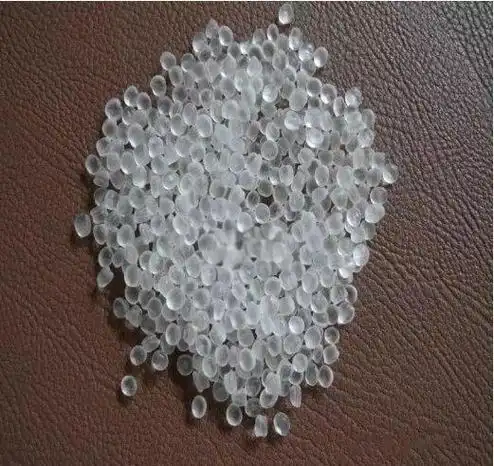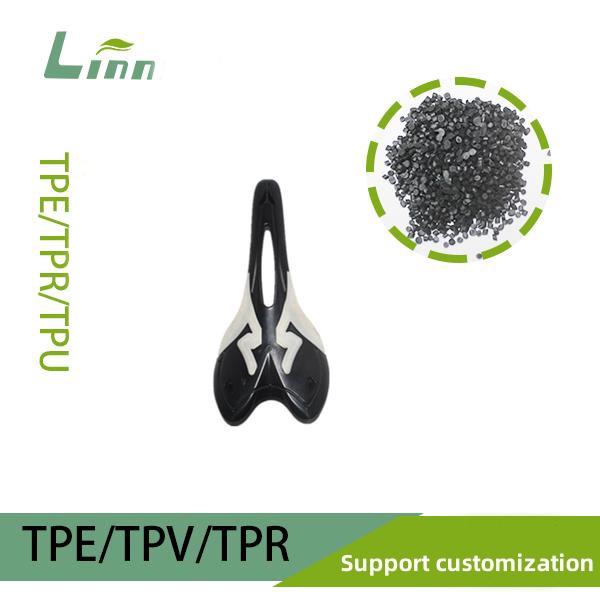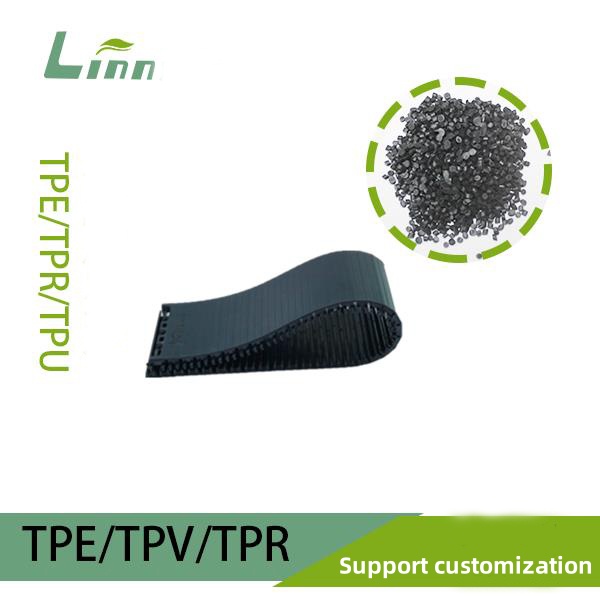In the world of injection molding, color inconsistency in TPE (Thermoplastic Elastomer) products can be a frustrating and costly problem. As an industry expert with extensive experience in TPE material processing and injection molding, I’ve encountered numerous scenarios where achieving uniform color throughout a part was a significant challenge. In this article, I’ll share my insights and practical solutions to help you tackle color inconsistency issues in TPE injection molded products.
Understanding the Causes of Color Inconsistency in TPE Injection Molded Products
Before diving into solutions, it’s essential to understand the root causes of color inconsistency in TPE injection molded products. This knowledge will enable you to identify the specific issues affecting your production and implement targeted solutions.
1. Material-Related Factors
TPE materials are sensitive to various factors that can influence color consistency.
Base Resin Variability: The base resin used in TPE formulations can vary in terms of its molecular weight, distribution, and other properties. These variations can affect how the colorant disperses and interacts with the resin, leading to inconsistencies.
Colorant Dispersion: The way colorants are dispersed within the TPE resin is crucial for achieving uniform color. Poor dispersion can result in streaks, spots, or uneven color distribution.
Additive Interactions: TPEs often contain various additives, such as plasticizers, stabilizers, and fillers. These additives can interact with the colorant, affecting its stability and performance.

2. Process-Related Factors
The injection molding process itself can introduce variables that impact color consistency.
Temperature Variations: Fluctuations in barrel and mold temperatures can affect the flow behavior and viscosity of the TPE material, leading to inconsistent color distribution.
Injection Speed and Pressure: Improper injection speed and pressure settings can cause the material to flow unevenly, resulting in color variations.
Mixing and Homogenization: Inadequate mixing and homogenization of the TPE material in the injection molding machine can lead to pockets of unmixed material with different color concentrations.
3. Equipment-Related Factors
The condition and configuration of your injection molding equipment can also play a role in color inconsistency.
Screw and Barrel Wear: Worn screws and barrels can affect the plasticization and mixing of the TPE material, leading to inconsistent color.
Nozzle Design and Condition: The design and condition of the nozzle can impact the flow of the material and the distribution of colorant. A clogged or damaged nozzle can cause uneven color.
Hot Runner System Issues: If your injection molding machine uses a hot runner system, issues such as temperature imbalances, leaks, or blockages can lead to color inconsistency.
Practical Solutions to Solve Color Inconsistency Issues in TPE Injection Molded Products
Now that we’ve identified the potential causes, let’s explore practical solutions to help you achieve consistent color in your TPE injection molded products.
1. Material Selection and Preparation
Choosing the right TPE material and preparing it properly are crucial steps in ensuring color consistency.
Select High-Quality Base Resins: Work with reputable suppliers to source TPE base resins with consistent properties. This will help minimize variations in colorant dispersion and performance.
Optimize Colorant Selection: Choose colorants that are specifically designed for TPE materials and have good compatibility with your base resin. Consider using masterbatches or pre-colored compounds to ensure uniform color distribution.
Proper Material Drying: TPE materials are hygroscopic, meaning they can absorb moisture from the air. Moisture can cause degradation and affect color consistency. Ensure that your TPE material is properly dried before processing, following the supplier’s recommendations for drying time and temperature.
Material Blending and Homogenization: If you’re blending different TPE materials or adding additives, ensure that the blending process is thorough and consistent. Use a high-quality blender or mixer to achieve uniform distribution of all components.

2. Process Optimization
Fine-tuning your injection molding process parameters can significantly improve color consistency.
Temperature Control: Maintain consistent barrel and mold temperatures within the recommended range for your TPE material. Use temperature controllers and sensors to monitor and adjust temperatures as needed. Avoid sudden temperature changes that can cause material degradation or uneven flow.
Injection Speed and Pressure Optimization: Experiment with different injection speeds and pressures to find the optimal settings for your part geometry and material. Start with moderate settings and gradually adjust them to achieve uniform filling and color distribution. Be cautious not to exceed the maximum recommended speeds and pressures for your TPE material, as this can cause degradation or other issues.
Back Pressure Adjustment: Back pressure helps to ensure proper mixing and homogenization of the TPE material in the barrel. Set the back pressure at an appropriate level to achieve consistent color distribution without causing excessive shear heating or degradation.
Cycle Time Optimization: The cycle time, including the injection, holding, and cooling phases, can affect color consistency. Ensure that the cycle time is sufficient for the material to fully solidify and maintain its color properties. Avoid overly long cycle times that can cause material degradation or uneven cooling.
3. Equipment Maintenance and Upgrades
Regular maintenance and, if necessary, upgrades to your injection molding equipment can help prevent color inconsistency issues.
Screw and Barrel Inspection and Replacement: Regularly inspect the screw and barrel for signs of wear, such as scoring, pitting, or corrosion. Replace worn components as needed to ensure proper plasticization and mixing of the TPE material.
Nozzle Cleaning and Replacement: Clean the nozzle regularly to remove any buildup or debris that can affect material flow and color distribution. If the nozzle is damaged or worn, replace it with a new one that is compatible with your TPE material and injection molding machine.
Hot Runner System Maintenance: If your machine uses a hot runner system, perform regular maintenance checks to ensure that all components are functioning properly. Check for temperature imbalances, leaks, or blockages and address them promptly. Consider upgrading to a more advanced hot runner system with better temperature control and flow distribution capabilities if needed.

4. Mold Design and Optimization
The design of your mold can also impact color consistency in TPE injection molded products.
Gate Design and Location: The gate is the point where the molten TPE enters the mold cavity. The design and location of the gate can affect the flow of the material and the distribution of colorant. Consider using a gate design that promotes even flow and minimizes shear stress, such as a fan gate or a submarine gate. Place the gate in a strategic location to ensure that the material fills the cavity uniformly and that the colorant is evenly distributed.
Venting: Proper venting is essential for allowing air and gases to escape from the mold cavity during injection. Inadequate venting can cause trapped air pockets, which can lead to color variations or other defects. Ensure that your mold has sufficient venting channels and that they are positioned correctly to prevent air entrapment.
Cooling Channel Design: The design of the cooling channels in your mold can affect the cooling rate and uniformity of the TPE part. Uneven cooling can cause stress, warping, or color inconsistency. Design the cooling channels to provide uniform cooling throughout the part, and consider using conformal cooling channels if possible to improve cooling efficiency and consistency.
5. Quality Control and Inspection
Implementing a robust quality control and inspection process is crucial for identifying and addressing color inconsistency issues early on.
Visual Inspection: Regularly inspect the parts visually for any signs of color variations, streaks, spots, or uneven color distribution. Use a consistent lighting source and inspection criteria to ensure accurate and objective evaluations.
Color Measurement: Use color measurement instruments, such as colorimeters or spectrophotometers, to quantify and compare the color of the parts. Establish color tolerance limits based on your customer’s requirements and monitor the color of the parts against these limits.
Statistical Process Control (SPC): Implement SPC techniques to monitor and control the injection molding process. Track key process parameters, such as temperature, pressure, and cycle time, and use statistical tools to identify trends, variations, or potential issues that could affect color consistency.

Table: Summary of Solutions for Color Inconsistency in TPE Injection Molded Products
To provide a more structured overview of the solutions discussed above, I’ve compiled the following table.
| Category | Solution | Description |
|---|---|---|
| Material Selection and Preparation | Select High-Quality Base Resins | Work with reputable suppliers to source TPE base resins with consistent properties. |
| Optimize Colorant Selection | Choose colorants designed for TPE materials with good compatibility. Consider using masterbatches or pre-colored compounds. | |
| Proper Material Drying | Dry the TPE material according to supplier recommendations to prevent moisture-related issues. | |
| Material Blending and Homogenization | Ensure thorough and consistent blending of TPE materials and additives using a high-quality blender or mixer. | |
| Process Optimization | Temperature Control | Maintain consistent barrel and mold temperatures within the recommended range. Use temperature controllers and sensors. |
| Injection Speed and Pressure Optimization | Experiment with different settings to find the optimal ones for uniform filling and color distribution. | |
| Back Pressure Adjustment | Set the back pressure at an appropriate level for proper mixing and homogenization without excessive shear heating. | |
| Cycle Time Optimization | Ensure the cycle time is sufficient for material solidification and color stability. Avoid overly long cycle times. | |
| Equipment Maintenance and Upgrades | Screw and Barrel Inspection and Replacement | Regularly inspect for wear and replace worn components to ensure proper plasticization and mixing. |
| Nozzle Cleaning and Replacement | Clean the nozzle regularly and replace it if damaged or worn to maintain proper material flow. | |
| Hot Runner System Maintenance | Perform regular maintenance checks on the hot runner system and address any issues promptly. Consider upgrades if needed. | |
| Mold Design and Optimization | Gate Design and Location | Use a gate design that promotes even flow and minimizes shear stress. Place the gate strategically for uniform filling. |
| Venting | Ensure sufficient venting channels to prevent air entrapment and color variations. | |
| Cooling Channel Design | Design cooling channels for uniform cooling throughout the part to prevent stress, warping, or color inconsistency. | |
| Quality Control and Inspection | Visual Inspection | Regularly inspect parts visually for color variations using consistent lighting and inspection criteria. |
| Color Measurement | Use color measurement instruments to quantify and compare part colors against established tolerance limits. | |
| Statistical Process Control (SPC) | Implement SPC techniques to monitor and control process parameters, identifying trends and variations that could affect color consistency. |
Case Study: Resolving Color Inconsistency in a TPE Automotive Component
To illustrate the effectiveness of the solutions discussed above, let’s consider a real-world case study from an automotive component manufacturer.
Problem: The manufacturer was experiencing significant color inconsistency issues in a TPE automotive component. The parts exhibited streaks, spots, and uneven color distribution, leading to high rejection rates and customer complaints.
Solution: The manufacturer implemented the following strategies to resolve the color inconsistency issues:
Material Selection and Preparation: They switched to a high-quality TPE base resin from a reputable supplier and optimized their colorant selection, using a masterbatch specifically designed for TPE materials. They also ensured proper material drying before processing.
Process Optimization: They conducted a series of process trials to optimize the injection speed, pressure, and temperature settings. They found that a slightly lower injection speed and higher back pressure helped improve color consistency. They also adjusted the cycle time to ensure proper material solidification.
Equipment Maintenance and Upgrades: They inspected the screw and barrel and found signs of wear. They replaced these components to ensure proper plasticization and mixing of the TPE material. They also cleaned the nozzle and replaced it with a new one to improve material flow.
Mold Design and Optimization: They worked with a mold designer to optimize the gate design and location. They switched to a fan gate and placed it in a strategic location to promote even flow and minimize shear stress. They also added additional venting channels to prevent air entrapment.
Quality Control and Inspection: They implemented a visual inspection process using consistent lighting and inspection criteria. They also invested in a colorimeter to quantify and compare the color of the parts against established tolerance limits. They used SPC techniques to monitor and control the injection molding process, identifying and addressing any variations that could affect color consistency.
Result: After implementing these strategies, the manufacturer saw a significant improvement in color consistency in the TPE automotive component. The rejection rates decreased, and customer complaints were virtually eliminated. The component met the strict color requirements of the automotive industry, and the manufacturer was able to maintain a high level of quality and customer satisfaction.

Related Q&A
Q1: What are the most common causes of color inconsistency in TPE injection molded products?
A1: The most common causes include material-related factors such as base resin variability, poor colorant dispersion, and additive interactions; process-related factors like temperature variations, improper injection speed and pressure, and inadequate mixing; and equipment-related factors such as screw and barrel wear, nozzle issues, and hot runner system problems.
Q2: How can I improve colorant dispersion in TPE materials?
A2: To improve colorant dispersion, choose high-quality colorants designed for TPE materials, consider using masterbatches or pre-colored compounds, ensure proper material blending and homogenization, and maintain consistent processing conditions.
Q3: What is the recommended temperature range for TPE injection molding to achieve consistent color?
A3: The recommended temperature range varies depending on the specific TPE material. Consult the material datasheet or contact the supplier for the exact temperature recommendations. Generally, it’s important to maintain consistent temperatures within the recommended range to avoid material degradation and uneven color distribution.
Q4: How often should I inspect and maintain my injection molding equipment to prevent color inconsistency issues?
A4: The frequency of inspection and maintenance depends on factors such as the production volume, the condition of the equipment, and the materials being processed. As a general guideline, perform regular visual inspections of the screw, barrel, nozzle, and hot runner system (if applicable) on a weekly or monthly basis. Schedule more in-depth maintenance checks and replacements of worn components as needed, based on the equipment’s performance and the manufacturer’s recommendations.
Q5: What should I do if I still experience color inconsistency issues after implementing the suggested solutions?
A5: If you continue to experience color inconsistency issues, consider conducting a more in-depth root cause analysis. This may involve working with a material supplier, a process engineer, or a mold designer to identify any underlying factors that may be contributing to the problem. Additionally, you may need to further optimize your process parameters, equipment settings, or mold design to achieve the desired color consistency.





